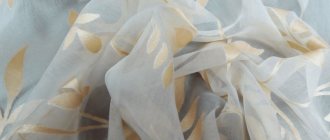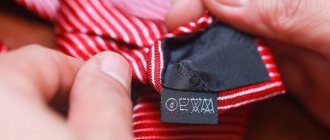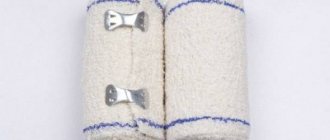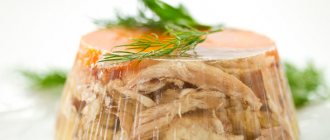Light, airy dresses, exquisite curtains made of flowing organza: many people prefer to refuse all this beauty, fearing the labor-intensive ironing of delicate fabric.
How to quickly iron organza after washing and is it possible to avoid this process altogether?
Ironing secrets will help you achieve an ideal result with minimal time and effort.
Properties of organza
Transparent organza fabric is highly durable. Belongs to the category of elastic and rigid materials.
Among the advantages of organza:
- High tensile strength and wear resistance;
- Pleasant to the touch and a little cool;
- Keeps its shape well;
- It drapes beautifully (you can create products with curvy silhouettes and form long-lasting folds);
- Does not form creases and does not wrinkle;
- Does not deform during washing and does not shrink;
- Dries quickly and does not fade in the sun;
- Light transmittance;
- Resistant to organic solvents and ultraviolet radiation.
Organza is used to make tulle curtains, curtains, evening and wedding dresses, decorations for them, and variety costumes.
Ironing temperature
It is logical to assume that the temperature of the iron should be, as when washing, no higher than 40°, but even such low heat can cause harm to the fabric. Some housewives iron curtains without additional protection, but the absence of deformation of the fabric in this case is simply luck. Burning organza is as easy as shelling pears. Making it go in waves is a piece of cake. Perhaps we won’t take risks and turn to the next point.
We recommend: An easy way to descale your iron: water and a little citric acid
Is it possible to iron organza with an iron?
Recommendations for caring for delicate fabrics also include ironing. Usually it is needed for dresses for special occasions.
Before ironing you need to:
- Check the cleanliness of the sole (there should be no scratches, roughness, or deposits on it).
- Study the requirements indicated on the label.
Iron temperature
One of the most important requirements. The heating temperature should be minimal (no more than 140 °C). Exceeding the permissible value is the main reason for the appearance of yellow spots, waves and melted areas.
You need to iron with a protective backing cloth, white cotton cloth (chintz/calico), and gauze. Gauze is more suitable for ironing seams and large folds. To protect the main fabric, it is too thin and easily sticks to the hot sole.
Ironing process
Performed in the following order:
- Turn the washed, slightly damp product inside out (only the seams are smoothed on the front side).
- Place it on a dense backing material (flannelette blanket) between two pieces of white material (moisten the top one with water and wring it out).
- Set the temperature mode.
- Test the heat level by starting ironing from an inconspicuous edge.
- Iron, moving the iron without pressure, staying in one place for 1-2 seconds. Do not leave the device on the fabric when stopped.
Web protection
If you decide to iron organza “for profit”, you are a risky person. For the rest, we advise you to play it safe and stock up on two pieces of plain white cotton fabric. Cotton has an ideal structure that does not print on the main fabric when ironed. White plain fabric certainly won’t stain the curtains or leave its own print on them. Well, two pieces are needed to put under the curtains and on top of them. This is a kind of textile sandwich.
You can use gauze to iron the seams, but for the main fabric such a thin fabric will provide too little protection. In addition, with gauze you need an impeccably clean and smooth surface of the iron sole, which not all devices that have been in use for several years can boast of.
True, even with such protection you should not relax: if you hold the iron in one area for a long time, a yellow spot may appear in this place, even if you have not exceeded the maximum permissible temperature of the iron. So you have to move your hands!
Advice
Iron the seams from the front side, otherwise instead of a smooth surface you will get the imprint of the sewing machine.
Features of ironing different types of fabric
Organza is made from synthetic fibers (viscose, polyester) and natural silk using the twisting method. This affects the properties of the resulting fabric and the method of caring for it (degree of heating, ironing technique).
Silk
Silk organza is smoothed when wet. It is carried out in two stages.
| Ironing steps | Procedure |
| Product preparation | 1. Place the slightly damp item on the ironing board. 2. The dried one is sprayed with a spray bottle. Leave for 30 minutes, wrapped in cellophane to soak evenly. |
| Ironing | 1. Install a silk attachment on the iron (if available). 2. The regulator sets the gentle heating mode (from 100 to 140 °C) or selects the “silk” option. Iron from the inside out. 3. When ironing with steaming, steam is supplied under low pressure in a finely sprayed form. |
Viscose
Viscose organza is a light, soft fabric with hygroscopic properties. After spinning in an automatic washing machine, it wrinkles a lot. She needs ironing. It is better to do it with an iron with a ceramic sole. But it can also be ordinary. Procedure:
- Set the temperature to 90 °C (one or two points on the regulator).
- Iron from the wrong side through a damp cloth or several layers of gauze.
- Work quickly, trying to avoid creases.
- It is not advisable to use the Steam function. The fabric may stretch.
Polyester
Weakly wrinkled material, not capable of self-leveling. Ironing recommendations:
- Heating temperature - 100 °C (option "nylon");
- Dry clothes on hangers, curtains on a curtain rod;
- Iron from the inside out, through a damp cloth/gauze.
- Do not steam with an iron (it will come out in waves). It is better to use steam coming from hot water from the bath.
If necessary?
When washing and drying organza is done correctly, you can avoid ironing this airy, silky fabric.
So for washing, use only special detergents for delicate fabrics , the water temperature should not exceed 35-40C.
When washing organza in a washing machine, the spin speed should not exceed 500 (or it is better to turn off the spin function altogether).
When washing by hand, it is strictly forbidden to wring out the fabric with your hands. Proper drying will help avoid the tedious ironing process .
To do this, clothes (dresses, sundresses, fluffy skirts) are hung on hangers, and curtains are hung wet on the curtain rod. Organza is dried away from heating devices and direct sunlight.
The video will show you how to wash organza in a washing machine so as not to iron it later:
How to iron organza curtains
The procedure is labor-intensive. To make long curtains easier to iron, do this:
- Place the ironing board near the chair/sofa/table/clothes dryer.
- The lower part of the curtain is placed on it, the rest of the panel is lowered to the floor in front of the board.
- They begin to iron, gradually moving the canvas towards themselves.
- As soon as the ironed part of the curtain reaches the floor at the ironer’s feet, it is moved to the sofa. And the ironing board is gradually moved away from him.
- They act in the same way until the curtain is completely smoothed along its entire length.
- Wide curtains for ironing are folded in 3-4 layers.
Smoothing
So, how to iron organza to avoid fabric deformation and color change.
When ironing, use a warm iron to avoid melting the airy material. The condition of the sole must be checked. It must be clean and smooth because the fabric is sensitive to snags.
Before starting, cover the ironing board with a layer of white cotton material. The second strip is used as an ironing iron. You shouldn’t use colored material, because it can leave stains, and if you put a terry towel on it, the structure will be sealed.
Important! It is prohibited to spray organza with water when ironing. This procedure leads to the appearance of small stains from drops.
You need to move the iron quickly across the surface of the fabric, pressing in each position and not stopping in one place. Go over the remaining bumps 3-4 times. If you “carry” it, the material will lose its shape and you will have to spend a lot of time on restoration. It is recommended to move the iron in the direction of the grain threads.
When dry, crumpled organza does not smooth out well. Only small creases will be straightened out; strong ones will still remain. You cannot turn on steaming to combat bruises. Hot steam negatively affects the material, it turns yellow and waves appear.
To work with large items, such as curtains, place the ironing board next to the sofa, bed or table. The smoothed part is laid out on the bed, and in the last section the board is gradually moved away. Wide fabrics can be ironed in several layers, avoiding the fold area. The fabric is turned and these areas are ironed separately.
Advice! You can use tissue paper as an ironing iron.
How to iron organza tulle
Airy tulle curtains should only be ironed, following the following recommendations:
- Start ironing immediately after washing. No need to dry. Get rid of excess water by hanging it on a crossbar.
- Set the regulator to the “∙” or “∙ ∙” position (t=90-120 °C).
- Start from an inconspicuous area.
- Iron a moistened piece of cotton material through a backing napkin using the sole attachment. And only from the wrong side.
Ironing other curtains
Curtains made of synthetics, which are quite light and very original, are becoming increasingly popular. But how to quickly iron curtains, because it’s not so easy to do?
To carry out this procedure, there are also several simple rules, which include:
- You should start ironing while the product is still damp;
- Do not spray curtains while hanging with a spray bottle, as it leads to the formation of streaks on delicate fabric;
- if the curtain is made of viscose, then it will be easier to steam it than to iron it, but this should be done from the wrong side;
- if the tulle is made of silk, then it is possible to iron the curtains from any side, but do not forget to place paper under the iron before so as not to burn the fabric.
How to iron tulle correctly? You should use an iron that has been set to a temperature of no more than one hundred and twenty degrees, as otherwise the material will change its color.
When asked how to iron curtains without removing them, experts answer that it is more expedient and safer to use a steam generator. But, if after washing all the manipulations are carried out properly, then the question will not arise whether the product needs to be ironed, since it will already look properly.
A prerequisite when ironing any tulle is the use of material that is laid between the curtain and the iron.
How to iron organza without an iron
In the following ways.
| Ironed product | Algorithm of actions |
| Items of clothing (fluid skirts, dresses) | Wash by hand or in a washing machine without wringing. Hang on a clothes hanger. Place above the bathtub. The water flowing from them will smooth out unnecessary folds and creases. To enhance the effect, you can steam by turning on hot water. |
| Curtains, tulle curtains | Immediately after the last rinse (without spinning), hang it on the curtain rods. Place rugs or other rags on the floor (to absorb water). Straightens manually by moving your palms up and down. Move without pressing, do not stretch the fabric too much. |
Using a steam generator
It will be needed to remove stubborn creases. It is used for vertical treatment of wet items hung on hangers or curtain rods with dry steam.
Procedure:
- Fill the reservoir with water.
- Turn on the device.
- Wait until the liquid boils (a characteristic bubbling sound will appear).
- Direct a stream of steam at the item that needs to be ironed. Keep the device at a distance of 15-20 cm from the item being steamed.
- Drive the steam generator from top to bottom, smoothly moving along the surface.
The importance of washing mode
Many ironing problems can be avoided by washing organza correctly.
- Temperature
In pursuit of whitening or crystal clarity, you can easily forget that synthetics cannot withstand high temperatures. And if we are always on the alert with the iron, then when washing we can without hesitation set the temperature to 50° or 60°, while the maximum for organza is 40°. Synthetics washed in too hot water have a damaged structure, which when drying creates unevenness that cannot be smoothed out with an iron! The synthetic thread will “float”, and nothing will return it to its former length and width, so set the parameters on the machine very carefully before starting washing. She must be very delicate.
- Handwash
Still, the best option would be to wash the curtains by hand, because this is not a very labor-intensive process that will allow you to completely control the situation.
- Spin
It is important to remember that you cannot press organza with your hands, and you can only set the machine to the lowest speed possible. The spinning process also affects the safety of the thread structure, so it is not recommended to neglect this advice.
Advice
For even more gentle washing, place the curtains in a special laundry bag. You can even use a pillowcase! This way, the thin fabric will not come into direct contact with the drum of the machine, which will greatly reduce the risk of snags, stains and other types of deformation.
How to care for organza after ironing
After ironing, dresses/skirts should dry naturally. They should be hung on hangers and left in the room for an hour and a half. Then you can put it in the closet.
Lay the curtains and tulle flat on the bed/sofa for 15-20 minutes. Then hang it in place, carefully smoothing it with your hands. Once a week, go over their surface with a dust brush or furniture broom.
Conclusion
The images that can be created with organza curtains are very beautiful, and it would be foolish to abandon their attractiveness just because of the hassle associated with caring for the material. The fabric is quite practical, does not fade, does not collect dust and does not need cleaning for a long time. With high-quality weekly cleaning, you will have to wash organza no more than 2-4 times a year.
Improper care of the curtains quickly leads to their wear, and it will no longer be possible to restore the attractiveness of the curtains. In order for curtains to last for many years and maintain their aesthetics, you need to give them due attention and provide high-quality non-aggressive cleaning on your own or with the help of professionals.
Related article: Hinges for aluminum doors and other suitable fittings for this type of door structure
Additional Tips
- Use only white fabric as a backing.
- Iron the seams with the edge of the sole so as not to damage the main fabric.
- To prevent the fabric from rippling, try not to overuse the Steam function.
- Do not hang tulle/curtains to drain excess water onto the rope. Transverse creases will appear, which are difficult to get rid of.
- Do not over-dry curtains and clothes after washing. When dry, it is much more difficult to iron them.
- To make ironing tulle easier, rinse it in a saline solution (2 tablespoons per 10 liters of water).
Recommendations for washing and ironing
Experts advise adhering to the main rule - do not wash thin curtains more than once a season. Despite the fact that washing should give the material its former cleanliness and freshness, in this case washing only aggravates the situation, making the product gray.
But how to quickly iron tulle so that it does not change its original appearance?
Below are basic recommendations on how to properly iron and wash curtains:
- Before you start washing, you need to soak the tulle in soapy water, in which a tablespoon of salt and the same amount of soda must first be dissolved. This solution allows you to cope with stains, but if the contamination is strong enough, you will need to change the water frequently.
- After pre-soaking, you should start washing. To carry out this manipulation, you need to pour warm water into a large container and add powder there. It should be borne in mind that you cannot rub the product; you are only allowed to raise and lower the tulle. After this, you should rinse the curtain several times in clean water. Under no circumstances should you wring out the curtain, as this will deform the delicate product and spoil the embroidery.
- You can also use the help of a washing machine, where you need to turn on the delicate washing mode.
- How to iron curtains after washing? After the curtains have been washed, you should hang the damp curtains straightened out on the curtain rod. If everything is done correctly, you won’t need to iron the curtains. If this becomes necessary, you will need to iron the curtain with a non-hot iron.
In order to iron the curtains correctly, you will need to wrap them in cotton fabric and iron them. The temperature should not be higher than one hundred and twenty degrees, otherwise stains will form on the curtain that will be impossible to remove.
According to experts, it is most difficult to iron a product made from the finest material. For example, how to iron organza so that it does not fade or become deformed?
Ironed curtains should be hung up immediately, as they wrinkle very quickly, especially those made of polyester materials.
If stains occur, you can simply repaint the tulle. For this purpose, you will need to buy fabric dye, which is sold in every hardware store.











